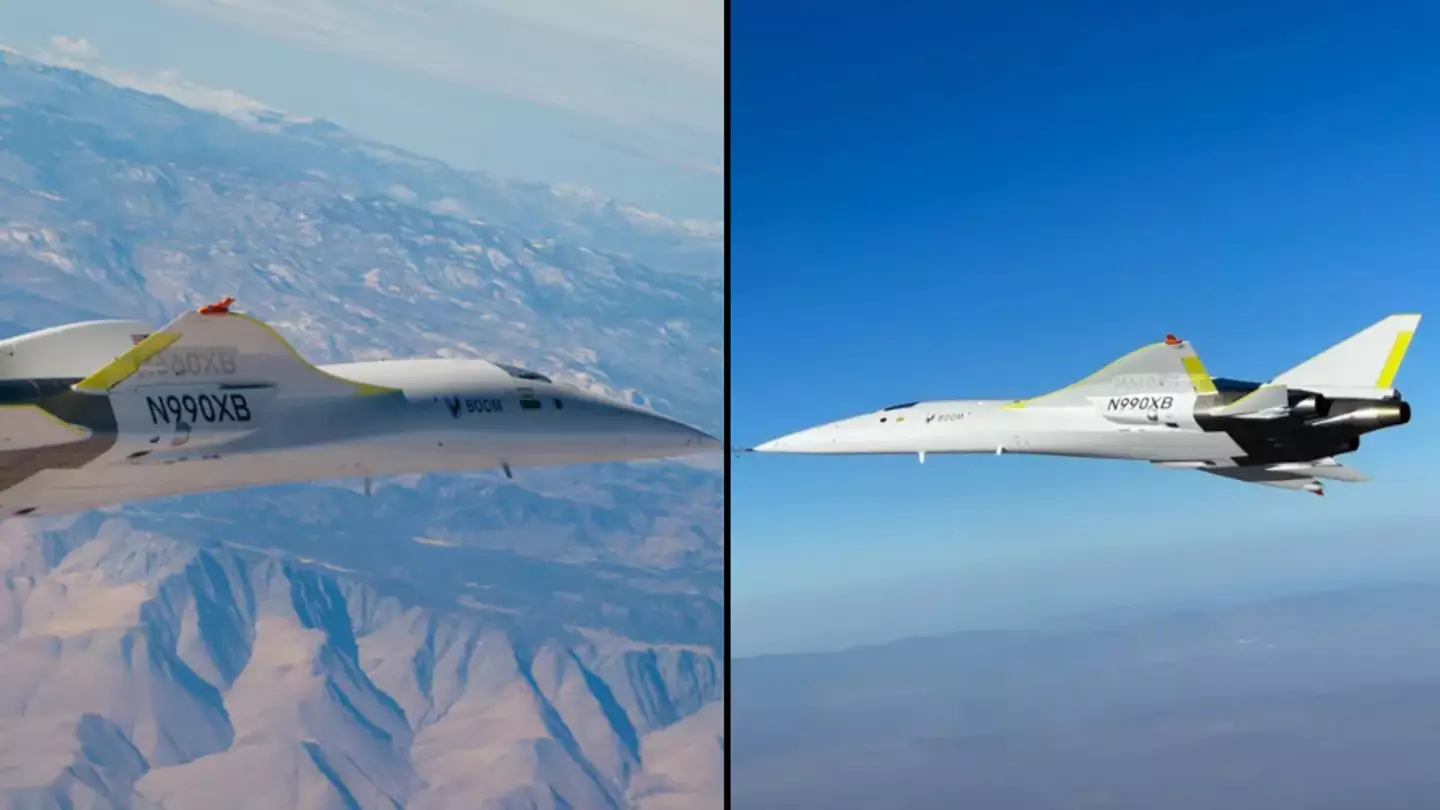This latest test focused on ensuring the aircraft’s structure can handle higher speeds and varying altitudes safely.
The dream of slashing flight times between London and New York to just 3.5 hours is edging closer to reality as Boom Technology’s ‘Son of Concorde’ has hit an exciting new milestone.
Officially named the XB-1, the jet is being developed by Boom Technology, a US company aiming to bring back the glory days of supersonic travel but in a more efficient and affordable way – with the plane having began it’s first round of 10 test flights back in March this year.
The XB-1 is their prototype, paving the way for future commercial jets that will eventually fly at the speed of sound – Mach 1.
The company’s long-term vision? To revolutionise air travel by cutting journey times in half, with a flight from London to New York taking just 3.5 hours instead of the usual eight.
In an recent update, Boom Technology explained that their latest test focused on ensuring the aircraft’s structure can handle higher speeds and varying altitudes safely.

The XB-1 has hit a new top speed and aims to go supersonic after its 10th test flight (Boom)
During its ninth test flight on 13 December, the supersonic jet also reached a record speed of Mach 0.87 (around 667mph) and soared to a new high of 27,716 feet.
“Flight nine focused on clearing flutter points at increased speeds and varying altitudes to ensure the aircraft structure continues to behave as predicted in the expanded flight envelope,” the company said in a recent blog post to their website.
“This type of testing measures the interaction of the aircraft structure with the atmosphere it is flying through and is critical as XB-1 continues to reach higher speeds.”
Following it’s previous flight on 16 November, their engineering team had to make ‘modifications’ to the flutter excitation system (FES), which seemed to have paid off as they enabled a ‘safer and more efficient progression through the transonic and supersonic regimes in the remaining test flights’.
Test pilot Tristan ‘Geppetto’ Brandenburg, who’s been flying the XB-1 over California’s Mojave Desert, has been very optimistic about the jet’s potential.

The XB-1 plane could represent a return to supersonic travel (Tom Cooper/Getty Images for Boom Technology)
Speaking earlier this year to The Sun, he said the new jet is designed to be much more accessible than the Concorde, which was grounded two decades prior.
“Part of the reason the Concorde isn’t flying anymore is just because it wasn’t a sustainable business model,” Brandenburg said.
“The flights were so expensive that the average person just couldn’t afford to take those.”
Boom Technology has also teamed up with the Defense Innovation Unit (DIU) and Air Force Operational Energy Office to continue testing technologies.
Recent upgrades also include a shark-skin-inspired material added to the XB-1’s underbelly to reduce drag, fuel consumption, and emissions—key features for sustainable supersonic travel, according to their website.
While Boom is making impressive progress, there’s still a way to go before passengers can hop aboard the ‘Son of Concorde’, as the company hasn’t announced a launch date for commercial flights, and a few delays early in its test run suggest it may be a few years before the jet’s promise becomes reality.


